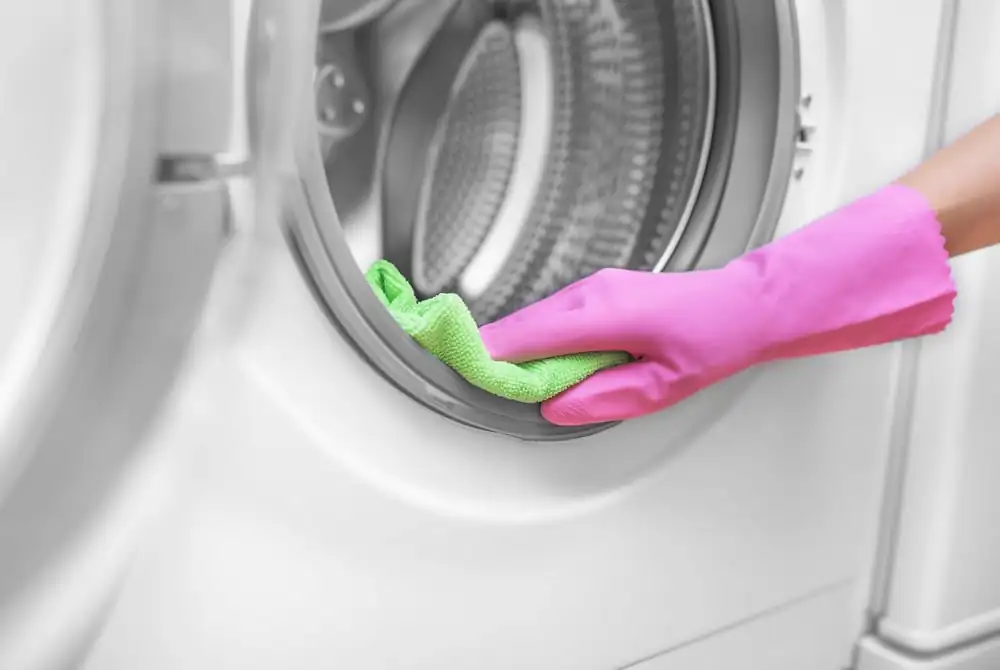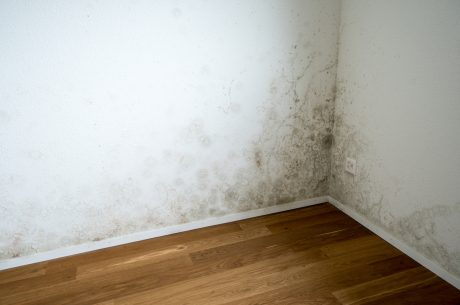Table of Contents
Get Rid of Mold and Prevent Future Growth
Mold growth in your home can be both unsightly and harmful to your health. It thrives in damp, humid environments and can lead to serious property damage and health issues if left unchecked.
The best way to get rid of mold is not just to clean it but to address the root cause—excess moisture—and implement long-term prevention strategies.
In this guide, we’ll explore how to effectively remove mold, prevent its recurrence, and maintain a mold-free home.
1. Identify and Address the Source of Moisture | Get Rid of Mold
Mold thrives in moisture-rich environments, so the first step in getting rid of mold is identifying and eliminating the source of excess moisture.
Find the Source:
Common sources of moisture include leaks in roofs, walls, or plumbing, as well as high humidity levels in rooms like bathrooms and kitchens. Condensation on windows or poorly ventilated areas can also contribute to mold growth.
Fix the Problem:
Simply wiping mold off surfaces is a temporary solution. To ensure the mold doesn’t return, you must fix any underlying moisture issues. This could include repairing leaks, improving ventilation, or using a dehumidifier to control humidity levels. Keep in mind that prevention is always better than cure. Stopping mold before it starts is key to protecting your health and property.
Prevent Mold Growth
The best way to combat mold is to prevent it from forming in the first place. Here are some proven strategies to keep your home mold-free:
- Enhance Air Circulation: Ensure proper ventilation in your home by using exhaust fans in bathrooms and kitchens, opening windows when possible, and allowing fresh air to circulate through rooms. Proper airflow reduces moisture buildup and prevents mold from gaining a foothold.
- Fix Leaks Promptly: Address leaks immediately, whether they are in the roof, plumbing, or basement. Even a small leak can provide the damp conditions mold needs to grow.
- Check Closed Areas Regularly: Basements, attics, and other closed-off spaces are prime spots for mold growth. Regularly inspect these areas for any signs of mold or moisture and take immediate action if you spot anything unusual.
- Control Humidity Levels: Use a dehumidifier to maintain indoor humidity levels below 50%. High humidity can quickly lead to mold growth, especially in poorly ventilated areas.
- Use Air Purification Gel: Place air purification gel diffusers in areas prone to mold growth. These gels help purify the air and prevent mold spores from settling and growing.
2. Protect Yourself When Cleaning Mold
When dealing with mold, personal protection is essential to avoid inhaling mold spores and experiencing respiratory issues.
Wear Protective Gear:
Equip yourself with gloves, goggles, and an N95 respirator mask to protect your skin, eyes, and lungs from mold spores. These spores can become airborne during cleaning, so proper protective gear is critical for your safety.
3. Contain the Area
Before cleaning, it’s important to contain the area to prevent mold spores from spreading to other parts of your home.
Seal Off the Area:
Close all doors and windows in the affected area and, if necessary, use plastic sheeting to seal off the space completely. This helps to prevent mold spores from traveling through the air to other rooms, potentially causing further contamination.
4. Remove Moldy Materials
In cases of severe mold infestation, some materials may be too contaminated to clean and will need to be removed and replaced.
Dispose of Contaminated Items:
If mold has deeply infested porous materials like drywall, carpets, or insulation, it’s best to remove and discard them. These materials are difficult to clean thoroughly and can harbor mold even after treatment.
5. Clean the Mold
Once the affected area is contained and any contaminated items are removed, you can begin the process of cleaning the mold.
Use Appropriate Cleaners:
For non-porous surfaces like glass, metal, or tile, a mixture of water and detergent is often enough to clean the mold. For more stubborn mold infestations, especially on surfaces like bathroom tiles or shower curtains, a solution of one cup of bleach mixed with one gallon of water can be effective. However, never mix bleach with ammonia, as it can create dangerous fumes.
Scrub the Area:
Using a scrub brush, thoroughly scrub the mold off affected surfaces. Once cleaned, rinse the area with clean water and dry it completely to prevent any remaining moisture from triggering mold regrowth.
6. Dry the Area Completely
After cleaning the mold, it’s crucial to ensure that the area is fully dried to prevent future mold growth.
Ensure Complete Drying:
Use fans and dehumidifiers to dry out damp areas after cleaning. Any remaining moisture, no matter how small, can lead to mold growth returning. Check all cleaned areas regularly over the next few days to ensure they stay dry.
7. Prevent Future Mold Growth
Prevention is key to keeping mold from returning. Follow these steps to ensure mold stays out of your home:
- Control Humidity: As mentioned earlier, keeping indoor humidity levels below 50% is essential to prevent mold. Use air conditioners or dehumidifiers to maintain optimal humidity levels, especially in humid climates.
- Improve Ventilation: Make sure that areas prone to moisture, such as bathrooms and kitchens, have adequate ventilation. Exhaust fans, open windows, and even air purifiers can help maintain a dry, mold-free environment.
- Regular Maintenance: Periodically inspect your home for leaks, water damage, or areas with poor ventilation. Fix any issues promptly to stop mold before it starts.
8. Monitor for Recurrence
Even after taking all the proper steps, it’s important to stay vigilant for any signs of mold returning.
Keep an Eye on the Area:
Check areas that were previously affected by mold regularly to catch any new growth early. The faster you spot mold, the easier it will be to address before it becomes a bigger problem.
When to Call a Professional
While it’s possible to handle small mold issues on your own, there are times when professional help is necessary.
- Large or Persistent Mold Problems: If you’ve addressed moisture issues and cleaned the mold, but it keeps returning, or if the mold covers more than 10 square feet, it’s time to call a professional mold remediation service.
- Black Mold: Black mold (Stachybotrys) is particularly dangerous and can lead to severe health problems. If you suspect black mold in your home, don’t try to clean it yourself. Hire a certified professional to handle the situation safely.
- Air Quality Concerns: Mold spores can spread throughout the home, leading to indoor air quality issues. If you notice persistent musty odors or experience respiratory issues, consult an expert to assess and improve the air quality in your home.
Conclusion
Mold can pose serious health risks and cause extensive damage to your home if not handled properly. By identifying and fixing moisture issues, cleaning mold correctly, and taking steps to prevent future growth, you can effectively get rid of mold and keep your home safe. For severe infestations or black mold, it’s always best to consult a professional to ensure your home is thoroughly and safely cleaned.
Stay vigilant, keep humidity levels in check, and regularly inspect your home to avoid mold-related problems in the future.
Why Choose PuroClean of Lansdale to Get Rid of Mold in Your Home
When faced with water damage and potential mold growth, choosing the right restoration company is crucial. Here’s why Puroclean of Lansdale stands out as your trusted partner in the Montgomery County, including Lansdale, Skippack, Norristown, and Ardmore:
- Local Expertise: We are a locally owned and operated company with extensive experience serving MontgomeryCounty and surrounding areas. We understand the unique challenges associated with water damage in our region, from seasonal weather patterns to specific building materials commonly used in our communities.
- Fast Response & 24/7 Availability: Water damage emergencies don’t wait for convenient hours. We offer 24/7 emergency response to minimize further damage and get the restoration process started swiftly. Our prompt response time ensures your property suffers less and recovers faster.
- Highly Trained & Certified Technicians: Our team comprises certified and highly trained water damage restoration technicians. They possess the necessary skills and knowledge to assess the situation effectively, develop a customized remediation plan, and execute the job efficiently and safely.
- Advanced Equipment & Technology: We invest in cutting-edge technology and equipment to ensure a thorough and efficient remediation process. This includes advanced drying equipment, industrial-grade dehumidifiers, and state-of-the-art mold detection tools.
- Insurance Navigation & Hassle-Free Claims: We understand the complexities of insurance claims. Our team will work directly with your insurance company to streamline the claims process and ensure you receive the maximum coverage for your restoration needs.
- Open Communication & Transparency: We believe in clear communication throughout the remediation process. Our team will keep you informed of every step, answer your questions promptly, and address any concerns you may have.
- Commitment to Customer Satisfaction: Your satisfaction is our top priority. We are dedicated to exceeding your expectations by providing exceptional service, high-quality workmanship, and a commitment to restoring your property to its pre-damage condition.
Protect Your Investment & Restore Your Peace of Mind
Don’t let water damage and potential mold growth overwhelm you. Contact PuroClean of Lansdale today at (267) 834-5900 for a free consultation. We’ll be there to guide you through the restoration process and ensure your property is restored quickly, safely, and efficiently.




 PuroClean of Lansdale
PuroClean of Lansdale